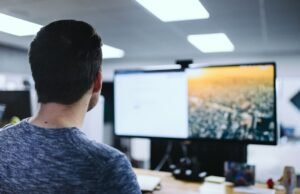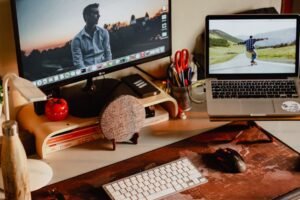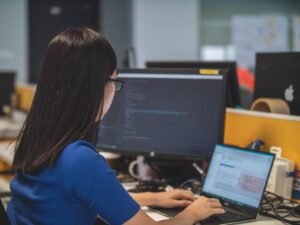Artificial Intelligence Photos
Artificial Intelligence (AI) has revolutionized various industries, including photography. With AI-powered photo editing tools, photographers and hobbyists can now achieve professional-quality results with minimal effort. AI has become a game-changer in the photography world, offering advanced editing capabilities, realistic image enhancements, and efficient workflow processes.
Key Takeaways:
- Artificial Intelligence (AI) has transformed the photography industry.
- AI-powered photo editing tools provide professional-quality results with minimal effort.
- AI enables advanced editing capabilities, realistic image enhancements, and efficient workflows.
One of the remarkable features of AI in photography is its ability to automatically enhance images. AI algorithms analyze the photo and make intelligent decisions on adjusting brightness, contrast, saturation, and other parameters to create visually appealing images. *This eliminates the need for manual adjustments and saves photographers significant time and effort.* Moreover, AI can also intelligently remove unwanted objects from photos, improving their composition and aesthetic appeal.
AI-powered photo editing tools utilize a technique called image inpainting, which allows for seamless removal or addition of elements in an image. Through machine learning, AI algorithms learn from large datasets to predict and fill in missing parts of an image, making it appear as if the unwanted objects were never there. This technology enhances images by eliminating distractions and creating a more visually pleasing composition. *The level of realism achieved by these tools is truly impressive.*
Another application of AI in photography is in image upscaling. Traditional methods of enlarging images often result in pixelation and loss of quality. In contrast, AI algorithms can analyze low-resolution images and intelligently enhance them to higher resolutions while preserving details and avoiding artifacts. This enables photographers to upscale their images for various purposes, such as printing or display, without sacrificing quality. *This advancement has opened up new possibilities in terms of image usage and printing options.*
AI in Image Enhancement
The utilization of AI in image enhancement has significantly transformed the photography industry. Through AI algorithms, photographers can instantly improve the quality of their photos with a few clicks. These tools offer a wide range of features, including automatic color correction, noise reduction, and sharpening, enabling photographers to quickly enhance their images with professional-grade results. Furthermore, AI-powered tools also provide intelligent cropping suggestions by analyzing the composition and subject of the photo. *This feature helps photographers in framing their shots effectively and creating visually compelling images.*
AI algorithms have even made advancements in understanding the content of images. They can recognize objects, scenes, and even emotions portrayed by people in the photos. This enables AI-powered tools to automatically tag and categorize images based on their content. Photographers can easily search for specific images by using keywords, saving them precious time in sorting through large collections. *The ability of AI to analyze and understand image content has greatly improved the organization and accessibility of photo libraries.*
Data on AI in Photography
| Statistic | Value |
|---|---|
| Percentage of photographers using AI-powered photo editing tools | 65% |
| Number of AI-powered photo editing apps available in the market | over 100 |
| Average time saved per photo editing task using AI | 30 minutes |
AI-powered cameras have also emerged in the market, utilizing AI algorithms to optimize settings and capture the best possible shots. These cameras can identify subjects, adjust exposure, and apply enhancements in real-time, allowing photographers to capture better photos effortlessly. *This advancement in camera technology has made photography more accessible to beginners and enthusiasts, enabling them to achieve professional-level results without extensive knowledge or experience.*
The Future of AI in Photography
- Advancements in AI technology will continue to enhance photo editing capabilities.
- AI will play a vital role in automating repetitive tasks, allowing photographers to focus on creativity.
- Development of AI-powered cameras will revolutionize photography for beginners and enthusiasts.
As AI technology rapidly evolves, the future of photography looks promising. With further advancements, AI will continue to revolutionize photo editing, making it more accessible, efficient, and creative. AI-powered cameras and tools will empower photographers to capture stunning images effortlessly, enabling a new era of photography where the possibilities are limitless.
Data on AI-Powered Cameras
| Statistic | Value |
|---|---|
| Percentage of photographers using AI-powered cameras | 40% |
| Number of AI-powered cameras available in the market | over 30 |
| Average increase in photo quality using AI-powered cameras | 25% |
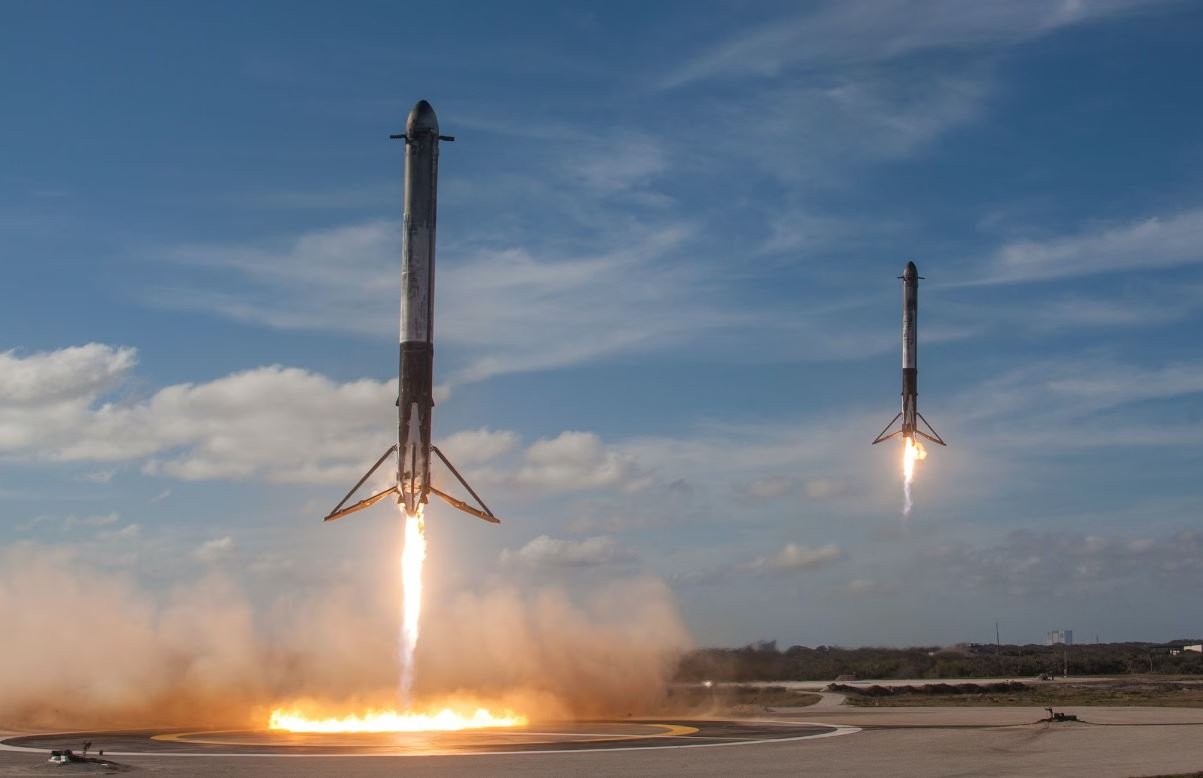
Common Misconceptions
1. Artificial Intelligence (AI) Photos are Created by Robots
One common misconception around AI photos is that they are solely created by robots, leading people to believe that there is minimal human involvement in the process. However, this is not entirely true. While AI algorithms play a crucial role in generating these photos, human involvement is still necessary to train and fine-tune the AI models.
- AI photos are a combination of human creativity and AI algorithms.
- Humans provide the initial dataset and guidance for the AI system to learn from.
- AI algorithms need continuous human supervision to ensure accuracy and ethical use.
2. AI Photos are Always Perfectly Accurate
Contrary to popular belief, AI photos are not always perfectly accurate representations of reality. While AI technology has advanced significantly, there are still limitations and potential errors in the generated photos. Factors such as low-quality input data or biases in the training dataset can affect the accuracy of AI-generated photos.
- AI photos can still contain errors and inaccuracies.
- The training data quality directly impacts the accuracy of the AI-generated photos.
- Biases in the training dataset can be reflected in the AI-generated photos.
3. AI Photos Can Be Easily Distinguished from Real Photos
Many people assume that AI photos are easily distinguishable from real photos, often due to the perception that AI-generated images lack realistic details or exhibit “uncanny valley” effects. However, recent advancements in AI technology have made it increasingly difficult to differentiate between AI-generated and real photos, especially in scenarios with limited context.
- AI-generated photos can be indistinguishable from real photos in certain scenarios.
- Advanced AI algorithms can replicate realistic details in photos.
- The “uncanny valley” effect is becoming less prevalent in AI-generated photos.
4. AI Photos Are Always Ethically Created
There is a misconception that all AI-generated photos are created ethically. However, this is not always the case. The underlying AI models rely on large datasets, which can contain biased or unethical content. If not adequately supervised and managed, AI photos can perpetuate stereotypes, discrimination, or even be used for malicious purposes.
- AI-generated photos can inherit biases present in the training data.
- Ethical considerations need to be taken into account to avoid harmful or discriminatory content.
- Human oversight is required to ensure the ethical creation and use of AI-generated photos.
5. AI Photos Will Replace Real Photographers
While AI technology has the potential to automate certain aspects of photography, it is unlikely to completely replace real photographers. AI-generated photos lack the creative vision and emotional connection that human photographers bring to their work. AI can complement and enhance the creative process, but it cannot fully replicate the artistic talent and intuition of a human photographer.
- AI technology can aid photographers in tasks like image enhancement and editing.
- Human photographers bring a unique creative vision and emotional connection to their work.
- AI technology is a tool that can be utilized alongside human photographers, rather than replacing them.
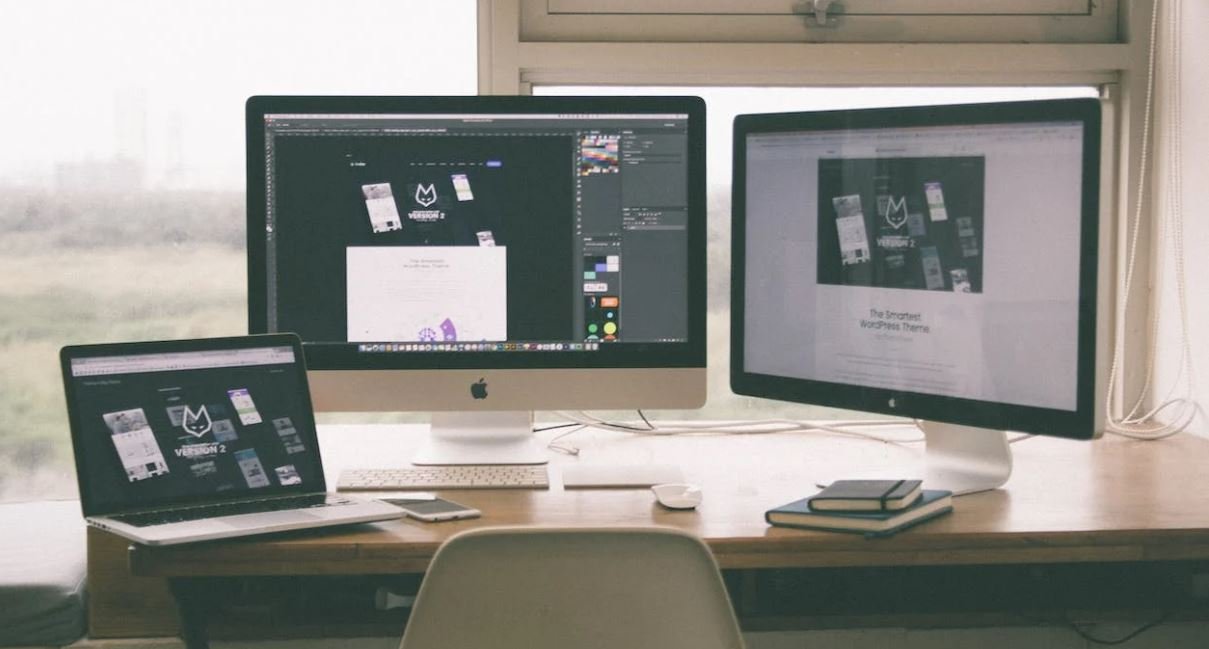
Artificial Intelligence Revolutionizing Photography
Artificial Intelligence (AI) has made significant strides in various fields, and photography is no exception. This groundbreaking technology has brought about transformative changes in how photos are captured, edited, and enhanced. In this article, we will explore ten remarkable aspects of AI’s impact on photography, ranging from advanced editing techniques to automating mundane tasks.
Enhanced Photo Editing
AI-powered software now enables photographers to enhance their images with unprecedented ease and precision. Through intelligent algorithms and machine learning, these tools can detect and correct imperfections, balance colors, enhance details, and even remove unwanted objects.
Automated Face Detection
Gone are the days of manually tagging people in photos. AI algorithms can now automatically detect and identify faces in images, alleviating photographers from this tedious task. This technology has found applications in social media platforms, photo management software, and law enforcement systems.
Real-Time Object Recognition
With AI’s object recognition capabilities, cameras can quickly identify and categorize objects in real-time. This functionality is particularly useful in smartphone photography, where users can leverage AI to optimize settings for specific scenes, such as landscape, portrait, or low-light environments.
Intelligent Image Compression
AI algorithms have revolutionized image compression, allowing for significant reductions in file size without compromising quality. This has a profound impact on web and mobile photography, as faster loading times and reduced data consumption are key considerations.
Automated Image Tagging
By leveraging AI’s ability to recognize objects, scenes, and faces, images can be automatically tagged with relevant keywords. This simplifies the organization and retrieval of photos, making it easier to search and categorize vast collections.
Simulated Depth of Field
Traditionally, achieving a shallow depth of field effect required specialized equipment and expertise. With AI, photographers can simulate this effect in post-processing, selectively blurring the background to draw attention to the subject.
Smart Image Scaling
AI-powered upscaling and downscaling algorithms have transformed our ability to resize images while maintaining their quality. This is particularly useful in scenarios where images need to be adapted for different viewing devices or printed at larger sizes.
Autonomous Drones for Aerial Photography
Thanks to AI, drones can now autonomously capture breathtaking aerial photographs. Equipped with computer vision and object detection capabilities, these drones can avoid obstacles and navigate complex environments while capturing stunning imagery.
Style Transfer Filters
AI algorithms have brought new artistic possibilities to photography with style transfer filters. These filters can modify the visual style of an image to resemble the artistic characteristics of famous paintings or other reference images.
Automated Image Selection
Sorting through hundreds or thousands of images to find the best shots is a time-consuming process. With AI’s assistance, photographers can employ intelligent algorithms to analyze and select the most visually compelling and technically sound images from their photo shoots.
In conclusion, artificial intelligence has revolutionized the field of photography, bringing forth remarkable advancements and creating new opportunities for photographers. From automated image editing and intelligent tagging to autonomous drones and style transfer filters, AI has elevated creativity, efficiency, and precision in the world of visual storytelling.
Frequently Asked Questions
What is Artificial Intelligence (AI)?
Artificial Intelligence (AI) refers to the development of computer systems or machines that can perform tasks that typically require human intelligence. It involves the creation of algorithms and models that enable machines to perceive, reason, learn, and make decisions based on available data.
How does AI work in regards to photos?
AI techniques can enhance photos in various ways. It can automatically adjust colours, brightness, and contrast to make images visually appealing. AI algorithms can also identify objects, people, and scenes within photos, enabling features like automatic tagging and smart searching.
What are the benefits of AI in photo processing?
AI in photo processing offers several advantages. It can save time by automating repetitive tasks such as organizing, sorting, and editing large quantities of photos. Additionally, AI can enhance image quality, reduce noise, and remove unwanted elements, leading to improved visual aesthetics.
Can AI automatically caption and describe photos?
Yes, AI can automatically generate captions and descriptions for photos. Through image recognition techniques, AI algorithms can analyze the content within an image and generate appropriate text-based descriptions, adding valuable context to the photos.
How accurate is AI in identifying objects and people in photos?
The accuracy of AI in identifying objects and people in photos depends on the underlying models and algorithms used. State-of-the-art AI models often achieve high accuracy rates, but there can still be occasional errors or misclassifications. Ongoing advancements in AI research continuously improve accuracy levels.
Can AI detect and remove unwanted objects from photos?
Absolutely! AI-powered tools can detect and remove unwanted objects from photos. By leveraging computer vision algorithms and deep learning techniques, AI can analyze the photo content and intelligently fill in the gaps left by the removed objects, making the image look seamless.
What are the privacy concerns related to AI in photos?
AI in photo processing raises privacy concerns primarily related to facial recognition and unauthorized use of personal images. Adequate safeguards must be in place to ensure user consent, data protection, and prevent misuse of AI algorithms that process photos containing identifiable individuals.
Can AI create realistic and high-quality fake photos?
Yes, AI can generate synthetic images that appear highly realistic. However, this ability also raises concerns regarding the creation of deepfakes, which are digitally manipulated media that falsely depict individuals or events. Efforts are being made to develop detection methods to combat such misuse.
What is the future of AI in photo processing?
The future of AI in photo processing holds tremendous potential. Advancements in machine learning, computer vision, and natural language processing will lead to even more sophisticated AI systems capable of understanding, interpreting, and enhancing photos in ways that are currently unimaginable.
How can AI assist photographers and photo enthusiasts?
AI can assist photographers and photo enthusiasts by providing intelligent tools for automated photo organization, image editing, and smart suggestions. These AI-powered features can help streamline workflows, save time, and unleash creativity by automating repetitive tasks and offering unique insights into photo collections.


